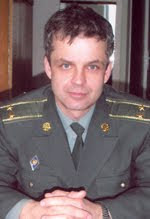 Here is a quotation taken from a very interesting article dedicated to the problem of writing and publishing a historical textbooks in the Russian Federation.
Here is a quotation taken from a very interesting article dedicated to the problem of writing and publishing a historical textbooks in the Russian Federation.
.....Two weeks ago, a group of politicians and academics met in Moscow’s main library to discuss how to make Russians proud of their history. The answer? Get an upbeat history book into the schools. “(The book) should not be a dreary look at or apology for what was done,” explained Prof. Leonid Polyakov of the Higher School of Economics.
The politicians were from Vladimir Putin’s United Russia Party, and they wanted the academics to come up with a single history textbook for use in all Russian schools. It should downplay the crimes and failures of 74 years of Communist rule—the purges, the mass deportations, the famines, the gulags—and concentrate on the glorious epic of the Soviet victory in the Second World War. Which means they must rehabilitate Stalin.
Rewriting the history books is not a Russian monopoly. The Texas Board of Education recently caused a great furor by deciding that its history textbooks should show that the founding fathers of the United States, and the authors of its constitution, intended America to be a Christian nation, not a country committed to the separation of church and state. Even that is an easier job than making Stalin look good, but it can be done.....
The politicians were from Vladimir Putin’s United Russia Party, and they wanted the academics to come up with a single history textbook for use in all Russian schools. It should downplay the crimes and failures of 74 years of Communist rule—the purges, the mass deportations, the famines, the gulags—and concentrate on the glorious epic of the Soviet victory in the Second World War. Which means they must rehabilitate Stalin.
Rewriting the history books is not a Russian monopoly. The Texas Board of Education recently caused a great furor by deciding that its history textbooks should show that the founding fathers of the United States, and the authors of its constitution, intended America to be a Christian nation, not a country committed to the separation of church and state. Even that is an easier job than making Stalin look good, but it can be done.....
The whole article is available at











